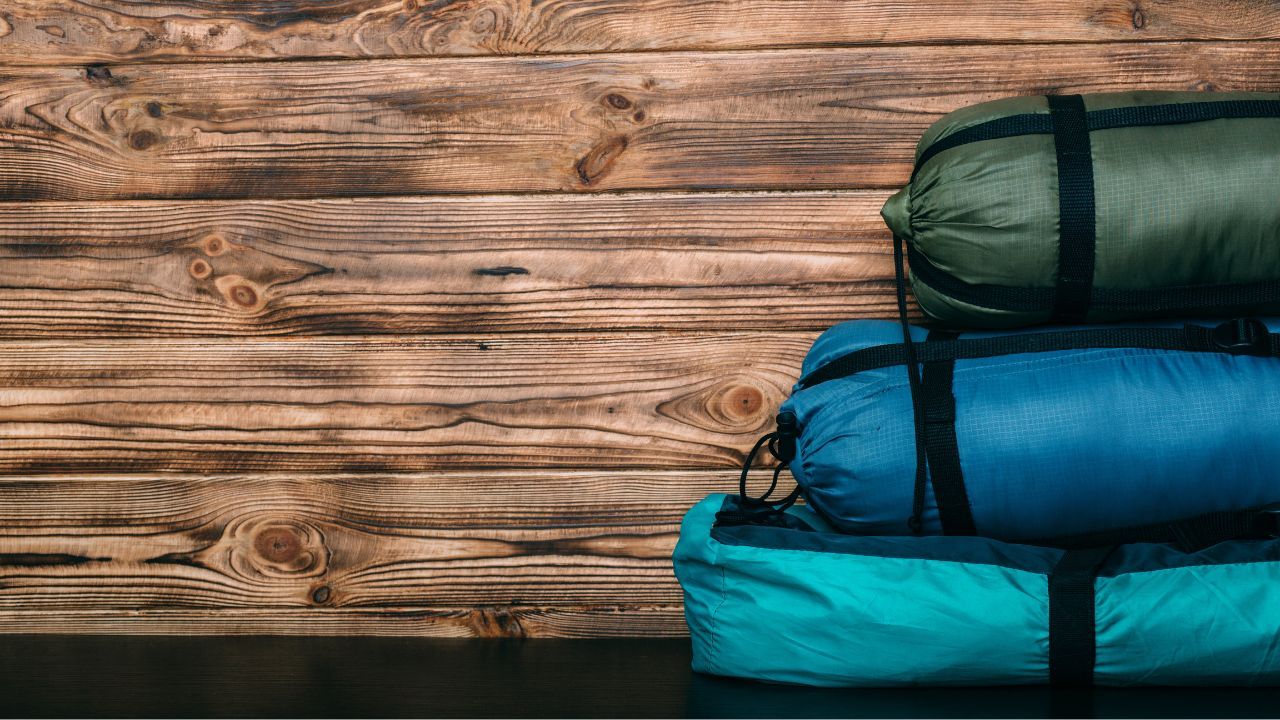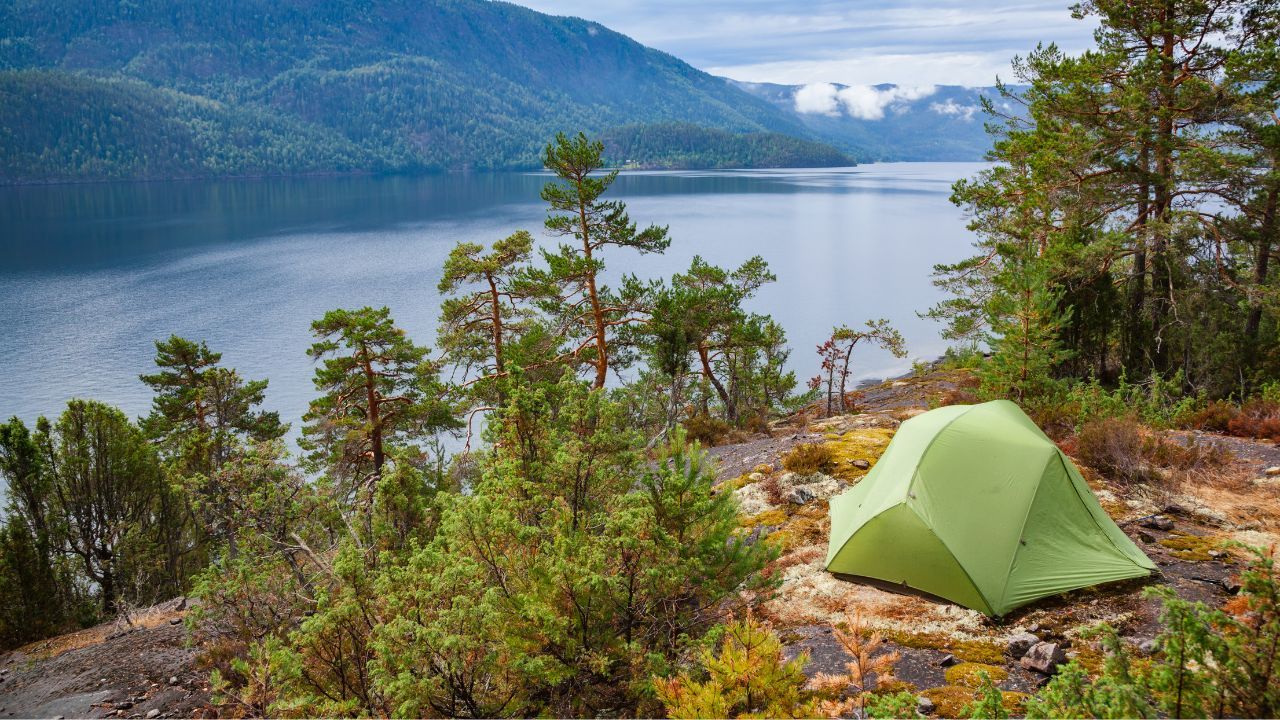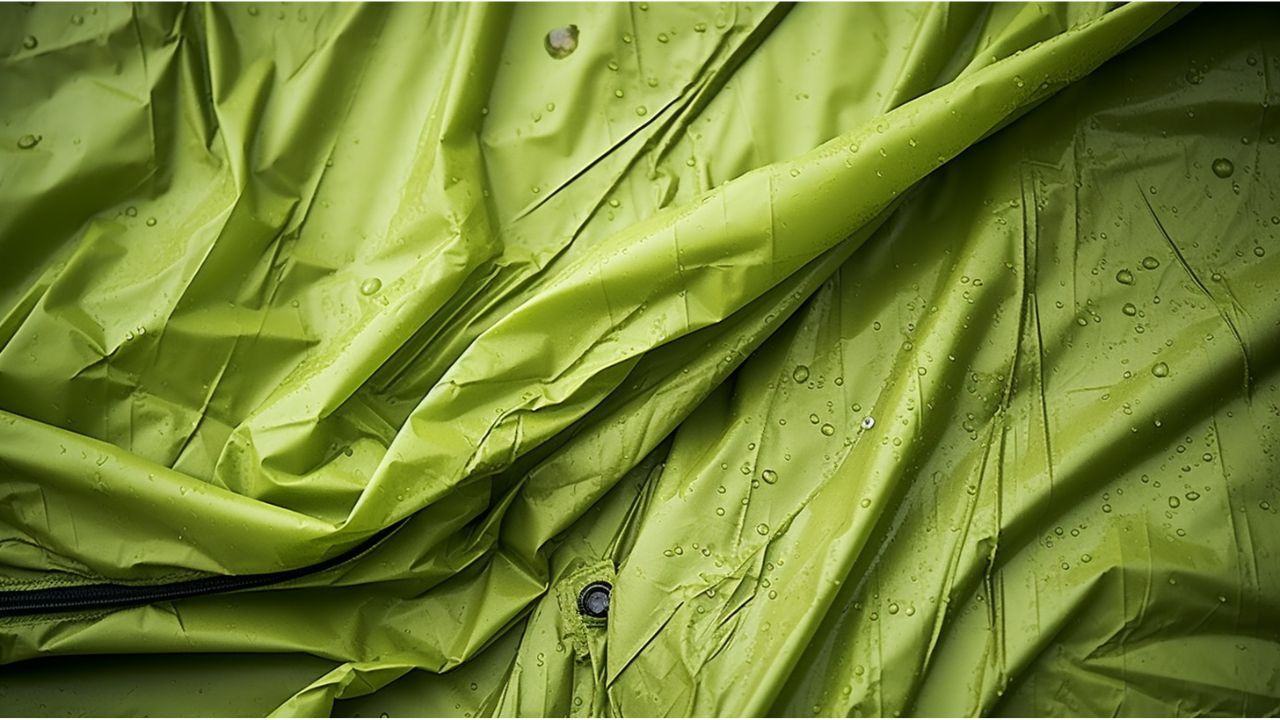
Polyester vs Nylon Tent | Making Sense of Tent Materials
Master the great outdoors. Learn the key differences between a polyester vs nylon tent and find out which one suits your camping style.
If you're reading this, chances are you're about to embark on an exciting journey and are in the process of choosing your most trusted companion—a tent.
Selecting the right tent is paramount, as it's more than just a shelter; it's your home away from home. It's where you'll rest after a long day of exploration, and it's what will protect you from the elements.
But before you dive into the world of tents, there's one thing you need to understand—the importance of choosing the right tent material.
The material of your tent can make a significant difference in your camping experience.
Whether it's standing strong against a heavy downpour or providing a cool shade during a hot summer day, the fabric of your tent plays a crucial role.
So, let's arm you with some knowledge and help you make the best choice for your adventures.
Understanding Tent Fabrics
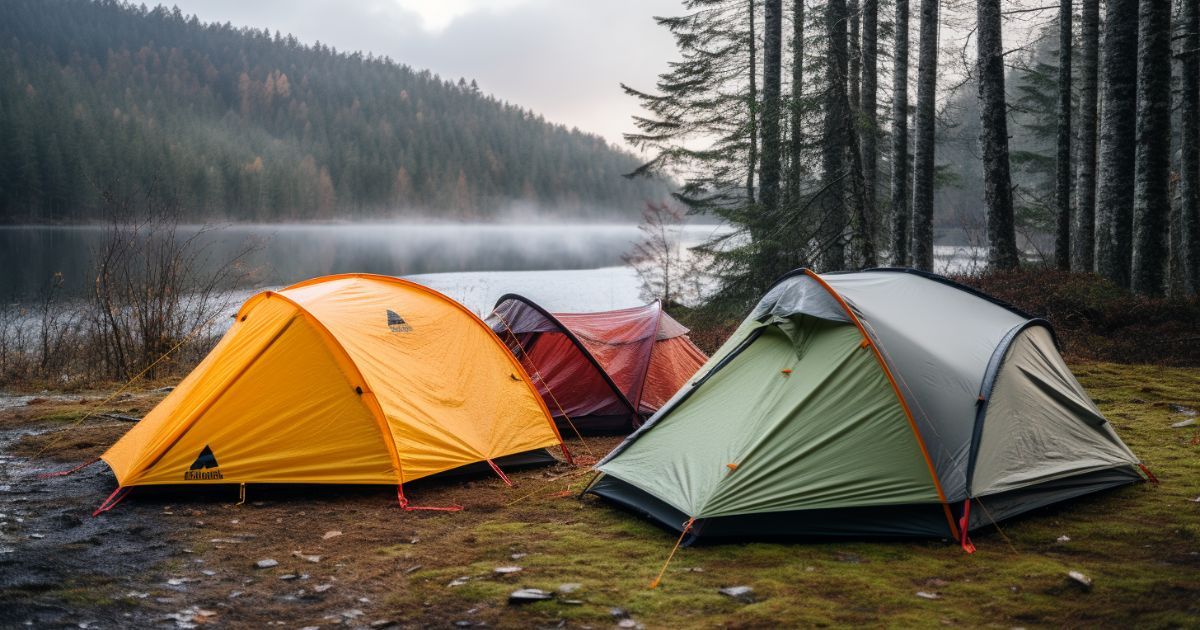
Tents come in a variety of materials, each with its own set of advantages and disadvantages. The main players in the world of tent fabrics are nylon, polyester, and canvas, but there are others worth mentioning too.
Nylon Tents
Nylon is a synthetic material that is lightweight and strong. It's often used in backpacking tents because of its excellent strength-to-weight ratio. However, it tends to sag when wet and isn't as UV-resistant as other materials.
Polyester Tents
Like nylon, polyester is also a synthetic material. It's commonly used in family camping tents due to its affordability, durability, and resistance to UV rays. Unlike nylon, it doesn't sag when wet, but it is slightly heavier.
Canvas Tents
Canvas, typically made from cotton, is a natural material that's exceptionally durable. It's great for insulation, keeping you warm in the cold and cool in the heat. However, cotton canvas tents can be heavy and require more maintenance than synthetic tents.
Other Tent Fabrics
In addition to these three options, there are other materials available, such as polycotton (a polyester and cotton blend) and cuben fiber (a high-performance non-woven fabric), also known as Dyneema Composite Fabric or DCF.
These alternatives provide their own distinct advantages and benefits.
- Polycotton combines the durability of polyester with the breathability of cotton. It's great for those looking for a lightweight but strong material that offers good insulation.
- Dyneema Composite Fabric (DCF) is one of the most popular tent fabrics on the market today. It's incredibly lightweight, waterproof, and tear-resistant, making it perfect for ultralight backpacking and mountaineering.
In the world of tent fabrics, we also encounter terms like 'synthetic materials' and 'man-made fabrics'.
- These refer to materials that have been chemically synthesized from petroleum products, like nylon and polyester.
- They're designed to mimic the properties of natural fibers while also improving upon them in some ways, such as increased durability or water resistance.
The Two Heavyweights: Polyester & Nylon
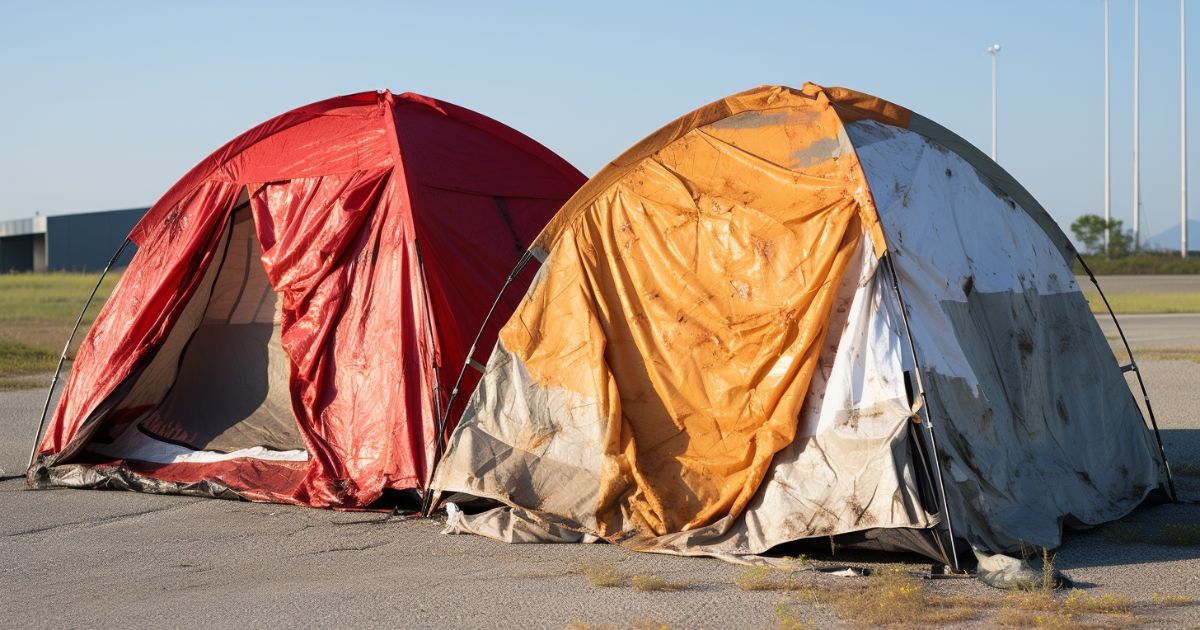
In the realm of synthetic tent fabrics, two materials reign supreme—polyester and nylon.
Both have their unique strengths and drawbacks, making them suitable for different camping situations.
To choose between them, you need to understand what each brings to the table.
Introduction to Polyester Tents
Polyester is a popular choice for many campers and outdoor enthusiasts.
- When the sun is blazing, polyester tents are less likely to fade or get damaged, thanks to their superior UV resistance.
- Unlike nylon, they don't sag when wet, ensuring your shelter remains taut and secure even in rainy weather.
Introduction to Nylon Tents
On the other hand, we have nylon—the lightweight champion.
- Nylon tents are often the go-to choice for backpackers and hikers who need to keep their packs as light as possible.
- Despite being light, nylon boasts impressive strength, thanks to its high tensile strength.
Comparison Between Polyester and Nylon Fabric
So, how do polyester and nylon stack up against each other?
If you're looking for a lightweight option, nylon is your best bet. But if durability and UV resistance are higher on your list, you might want to opt for polyester.
While both materials have good water resistance, polyester holds its shape better when wet.
Delving Deeper: Polyester Tents
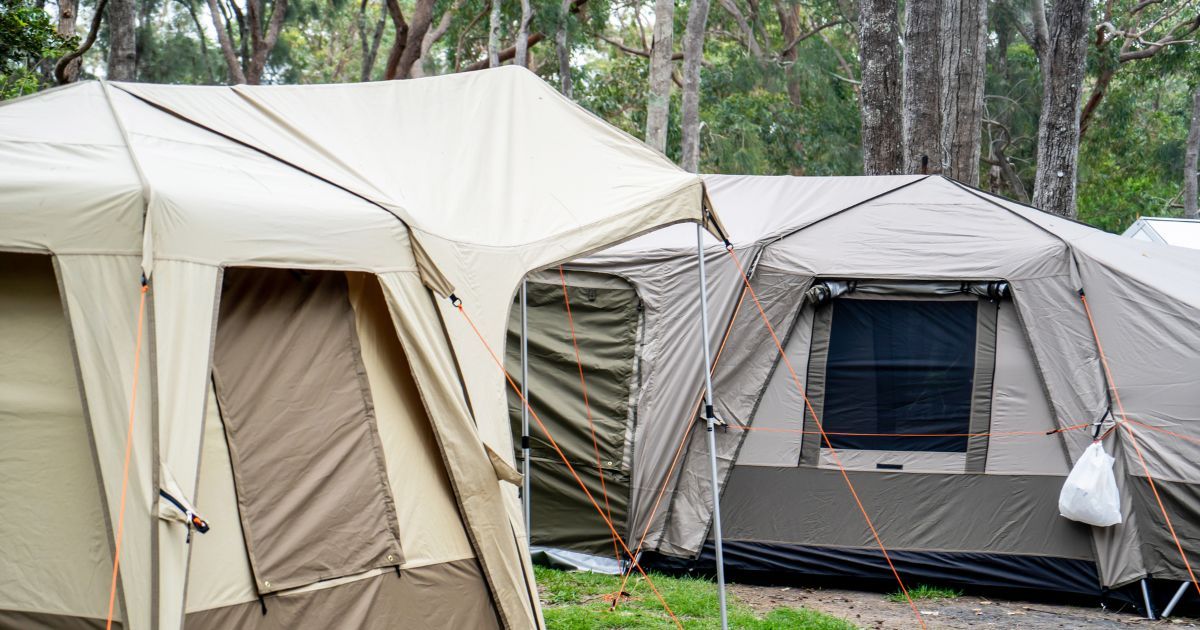
Now that we've introduced the two main contenders let's delve deeper into the world of polyester tents.
Understanding the intricacies of this material will help you make an informed decision about whether it's the right fit for your camping needs.
Detailed Analysis of Polyester Fabrics
Polyester is a synthetic fabric made from petroleum products. It's known for its durability, strength, and resistance to various environmental factors.
One of the key characteristics of polyester is its ability to resist UV damage. This means that even after prolonged exposure to sunlight, polyester tents won't degrade as quickly as other materials might.
Benefits of Polyester Tents
There are several advantages to choosing a polyester tent.
- Firstly, their UV resistance means they won't fade or degrade quickly in the sun—an essential factor if you're camping in sunny environments.
- Secondly, they're quite durable and can withstand harsh weather conditions, including heavy winds and rain.
- Finally, they hold their shape well when wet, unlike nylon, which can sag.
Drawbacks of Polyester Tents
Despite its many benefits, polyester isn't without its drawbacks.
The material is slightly heavier than nylon, which might be a concern for backpackers.
Additionally, while it's more water-resistant than nylon, it's not entirely waterproof.
This brings us to an important aspect of polyester tents—the PU coating.
Role of PU Coating in Polyester Tents
To enhance the water resistance of polyester tents, manufacturers often apply a polyurethane (PU) coating.
This coating forms a waterproof barrier on the tent's surface, preventing water from seeping through.
It is important to mention, though, that as time passes, the protective coating may deteriorate, leading to a decrease in the tent's ability to resist water.
Polyester’s Water Resistance Capabilities
As mentioned earlier, polyester itself isn't entirely waterproof. However, with a PU coating, it can effectively keep out rain, making it a suitable choice for camping in wet conditions.
Just remember to check the hydrostatic head rating—a measure of water resistance—of the tent before buying. A higher rating means better water resistance.
For example, a tent with a 3000mm hydrostatic head rating will be more water-resistant than one with a 2000mm rating.
In-Depth Look: Nylon Tents
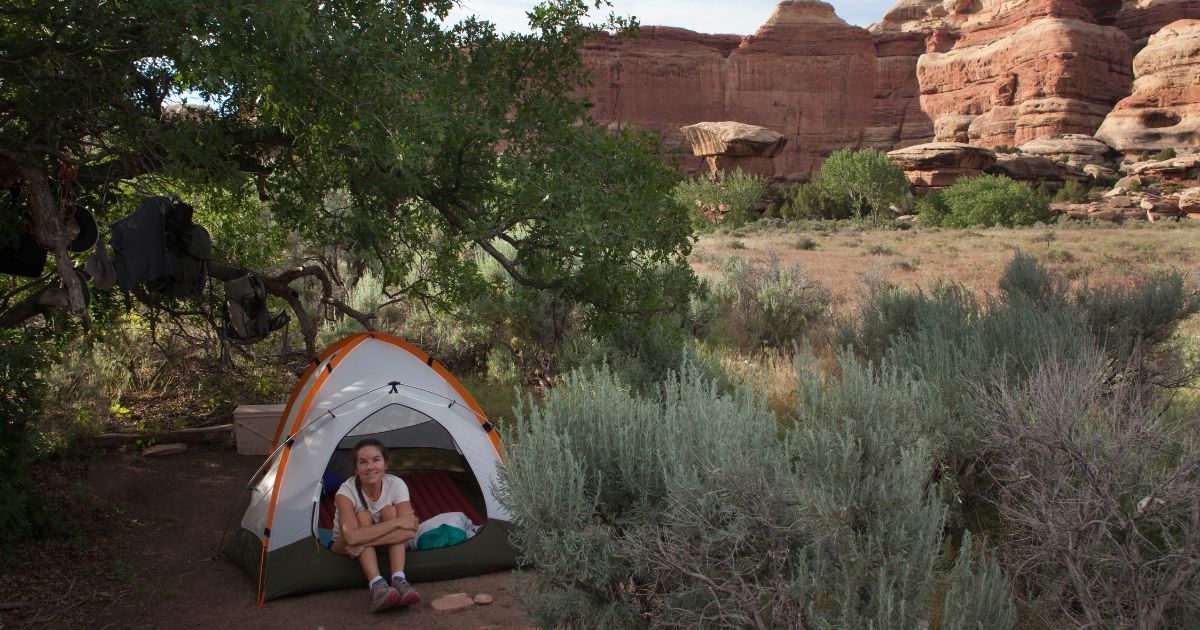
Let's shift our focus now to the other heavyweight in the world of tent materials—nylon.
Known for its lightweight properties, nylon is a favorite among backpackers and those who need to keep their gear light. But there's more to nylon than just its weight.
Detailed Analysis of Nylon Fabric
Nylon is a synthetic material made from petroleum products.
- It's incredibly strong for its weight, which is why it's often used in applications where strength and durability are needed, but weight is a concern.
- It has a high tensile strength, meaning it can withstand a lot of pull without breaking.
Benefits of Nylon Tents
So, when it comes to ultralight tents, this material is the ideal choice.
Despite being light, nylon doesn't compromise on strength, making it a durable option.
Moreover, nylon is also pretty resistant to abrasion, which can come in handy in rough terrains.
Drawbacks of Nylon Tents
However, nylon isn't perfect.
Furthermore, nylon isn't as UV-resistant as polyester, meaning it can degrade faster under prolonged exposure to sunlight.
Role of Silicone Coating in Nylon Tents
To overcome nylon's shortcomings, many manufacturers apply a silicone coating to the fabric. This not only enhances its water resistance but also improves its UV resistance.
A silicone-coated nylon tent, often referred to as silnylon, is lighter, stronger, and more water-resistant than uncoated nylon.
Nylon’s Water Resistance Capabilities
With a silicone coating, nylon can effectively repel water, making it a suitable material for tents.
However, keep in mind that the coating can wear off over time, and you might need to reapply it to maintain the tent's water resistance.
Special Mention: Ripstop Fabric
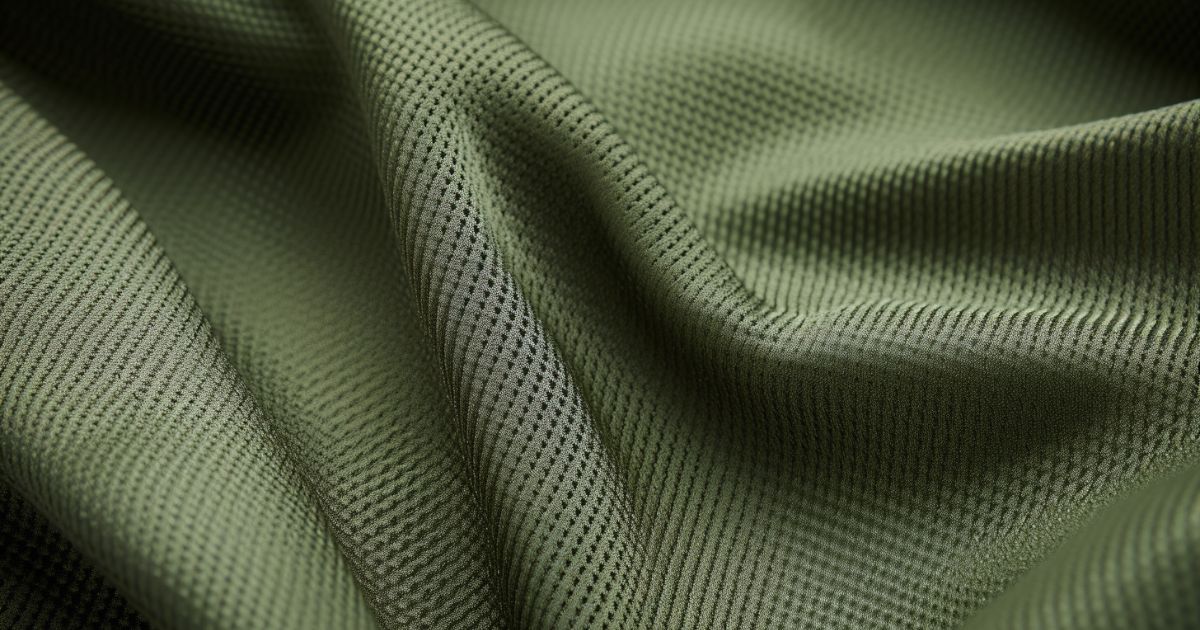
As we delve deeper into the world of tent materials, it's worth giving a special mention to ripstop fabric.
This fabric, as the name suggests, is designed to resist ripping or tearing, adding an extra layer of durability to your tent.
Ripstop Fabric and Its Role in Tent Making
Ripstop fabrics are woven using a special reinforcing technique that makes them resistant to tearing and ripping.
During weaving, reinforcement threads are interwoven at regular intervals in a crosshatch pattern. This results in a fabric that is incredibly durable and resistant to damage.
The main disadvantage of ripstop fabrics is that they're heavier and more expensive than regular fabrics. Therefore, if weight is a major concern for you, ripstop fabric might not be the best choice.
Ripstop Nylon vs Regular Nylon
Ripstop nylon has all the benefits of regular nylon—it's light, strong, and abrasion-resistant.
However, thanks to the reinforcing threads, it's even more resistant to tearing and ripping than regular nylon.
This makes it an excellent choice for camping in rough terrains or in conditions where the tent might be subject to a lot of wear and tear.
Ripstop Polyester vs Regular Polyester
Just like with nylon, ripstop polyester is more tear-resistant than regular polyester.
It shares the same UV resistance and durability as regular polyester but adds an extra layer of tear resistance, making it an even more robust option.
So, if you're planning to camp in harsh conditions or simply want a tent that will last you a long time, ripstop polyester could be a great choice.
The Role of Waterproof Coatings
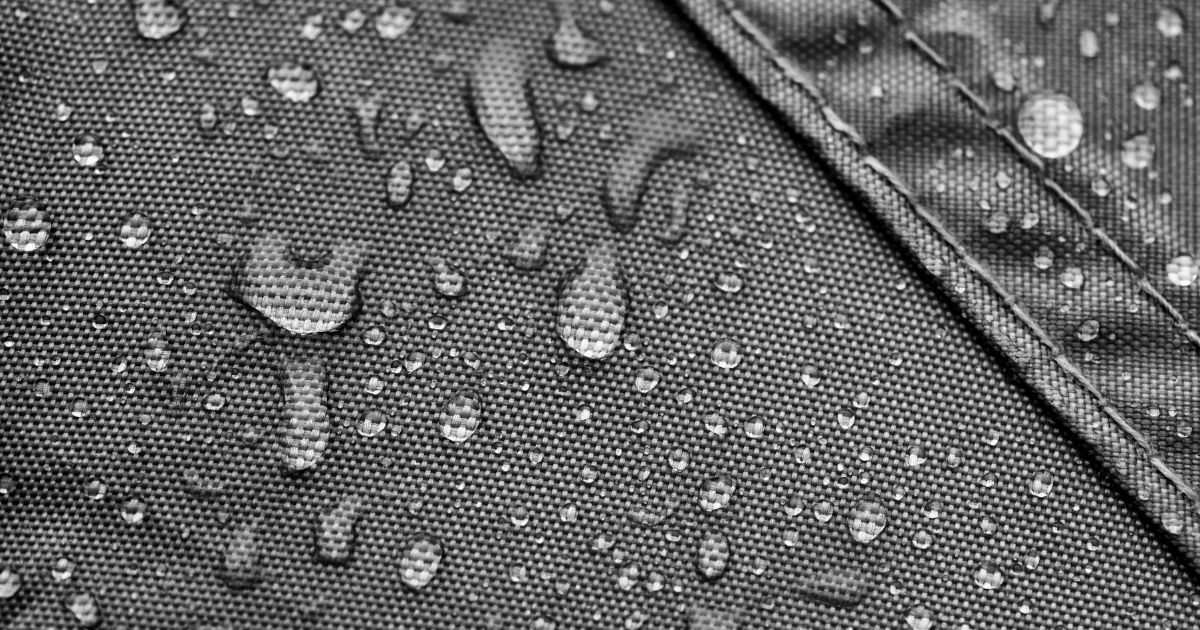
When it comes to tents, waterproofing is a major consideration.
After all, no one wants to wake up in a puddle during a downpour. That's where waterproof coatings come into play.
These coatings enhance the water resistance of tent fabrics, making them more suitable for outdoor use.
Explanation of Different Waterproof Coatings: PU Coating, Silicone Coating
There are two main types of waterproof coatings used in tents—polyurethane (PU) and silicone.
- PU coating is often applied to polyester tents to enhance their water resistance. It forms a waterproof barrier on the tent's surface that prevents water from seeping through. However, over time, this coating can degrade and may need to be reapplied.
- Silicone coating, on the other hand, is typically used on nylon tents. It not only improves water resistance but also enhances UV resistance, helping to protect the tent from sun damage.
- Silicone-coated nylon, or silnylon, is lighter, stronger, and more water-resistant than uncoated nylon.
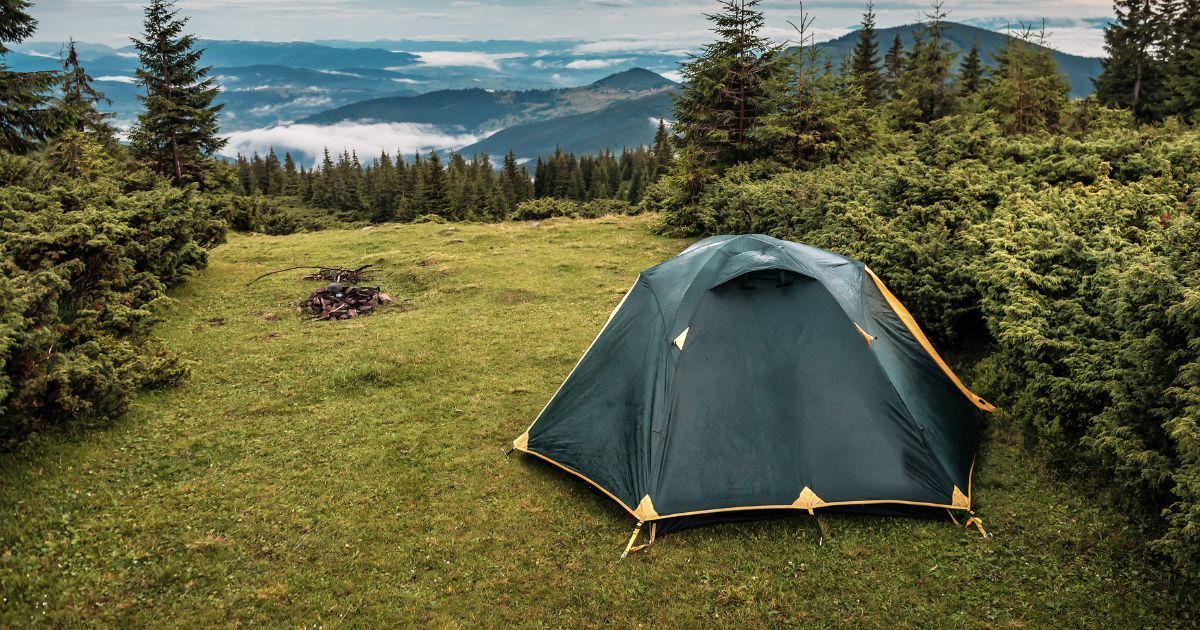
Importance of Waterproof Rating in Tents
When choosing a tent, it's important to consider its waterproof rating, often referred to as the hydrostatic head rating.
This rating, measured in millimeters, indicates how much water pressure the fabric can withstand before it starts to leak. A higher rating means better water resistance.
For example, a tent with a 3000mm rating will be more water-resistant than one with a 2000mm rating.
How Weather Conditions Can Affect the Waterproof Capabilities of a Tent
While waterproof coatings can significantly improve a tent's water resistance, they're not infallible.
Similarly, prolonged exposure to sunlight can degrade the coating over time, reducing its effectiveness.
Regular maintenance and proper storage can help extend the lifespan of the waterproof coating.
Tent Floors and Poles: The Unsung Heroes
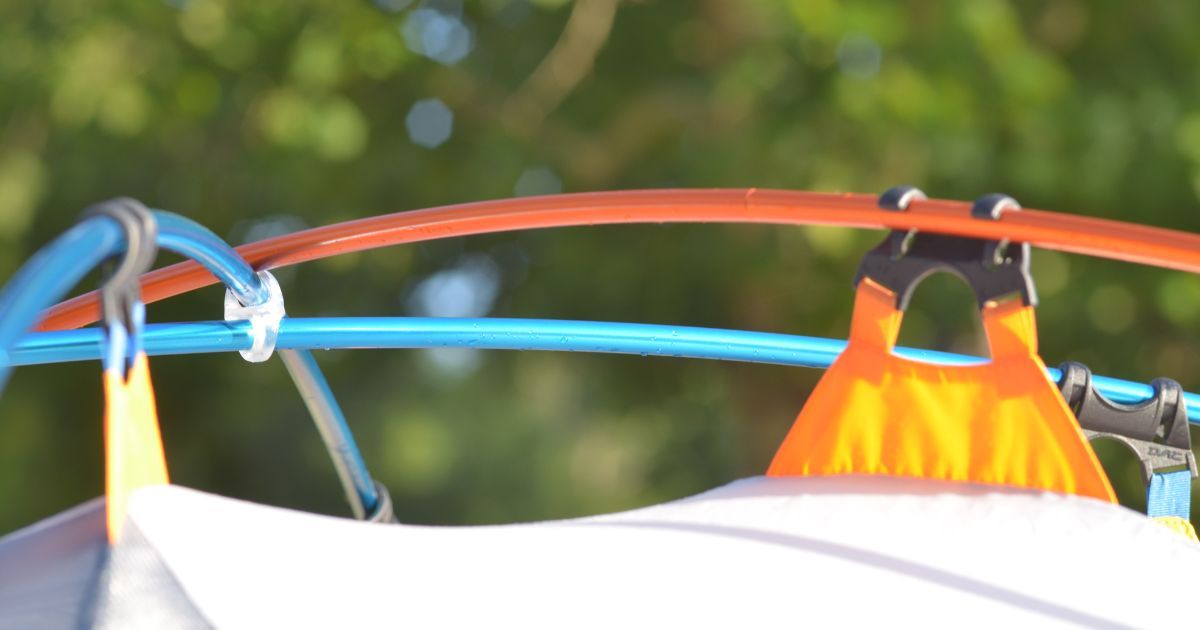
While much attention is given to the fabric of the tent, there are two other crucial components that often go unnoticed—the floor and the poles.
These unsung heroes play a vital role in your tent's performance and durability.
Importance of the Right Tent Floor and Poles
The floor of your tent is your barrier against the cold, damp ground. Therefore, it needs to be durable and water-resistant.
I highly recommend using a tent footprint to enhance the durability of your tent. This simple addition can significantly prolong the lifespan of your tent, ensuring that you can enjoy many outdoor adventures for years to come.
Tent poles, on the other hand, provide structure and stability to your tent.
They need to be strong enough to withstand wind and weather, yet light enough to carry with ease.
Different Materials Used for Tent Floors and Poles
Tent floors are typically made from the same material as the rest of the tent but with a thicker denier (a measure of fabric thickness).
- Polyester and nylon fabrics are common choices due to their durability and water resistance.
- Some premium tents even feature ripstop fabric floors for added durability.
When it comes to poles, aluminum and fiberglass are the most common materials.
- Aluminum poles are lightweight and strong, making them an excellent choice for backpacking tents.
- Fiberglass poles are cheaper and more flexible, but they're also heavier and less durable.
- Some high-end tents use carbon fiber poles, which are extremely light and strong but also quite expensive.
Other Factors to Consider When Choosing a Tent

Choosing the right tent involves more than just picking between polyester and nylon.
You also need to consider various external factors, like the weather conditions you'll be camping in and the durability of your tent.
Importance of Considering UV Radiation, High Altitudes, Heavy Rain, Strong Wind, and Other Weather Conditions
Different weather conditions can put different stresses on your tent.
For instance, UV radiation can degrade tent fabric over time, making UV resistance an important factor if you're camping in sunny environments.
Concept of a Season Tent
Tents are often categorized by seasons, 2-season, 3-season, and 4-season.
- 2-season tents are suitable for mild weather conditions and are typically lightweight.
- 3-season tents can withstand heavier rain and wind, making it suitable for spring, summer, and fall.
- 4-season tents are designed to withstand harsh weather conditions, including heavy snow and strong winds, making them suitable for winter camping or high-altitude expeditions.
Importance of Abrasion Resistance
Abrasion resistance is another crucial factor to consider.
If you'll be camping in rough terrains or areas with lots of vegetation, you'll want a tent that can withstand the wear and tear. This is where materials like ripstop fabric can come in handy.
Bottom Line
In this guide, we've taken a deep dive into the world of tent materials, focusing particularly on the two heavyweights—polyester and nylon.
Both materials have their strengths and weaknesses, making them suitable for different camping situations.
Polyester is durable and UV-resistant, but slightly heavier than nylon.
Nylon is lightweight and strong but can sag when wet and degrade faster under UV radiation.
Ultimately, the best tent material for you depends on your individual needs and circumstances.
Consider factors like the weather conditions you'll be camping in, the weight you're willing to carry, and the durability you need. And remember, no matter which material you choose, proper care and maintenance can significantly extend the lifespan of your tent.
Before You Go...
